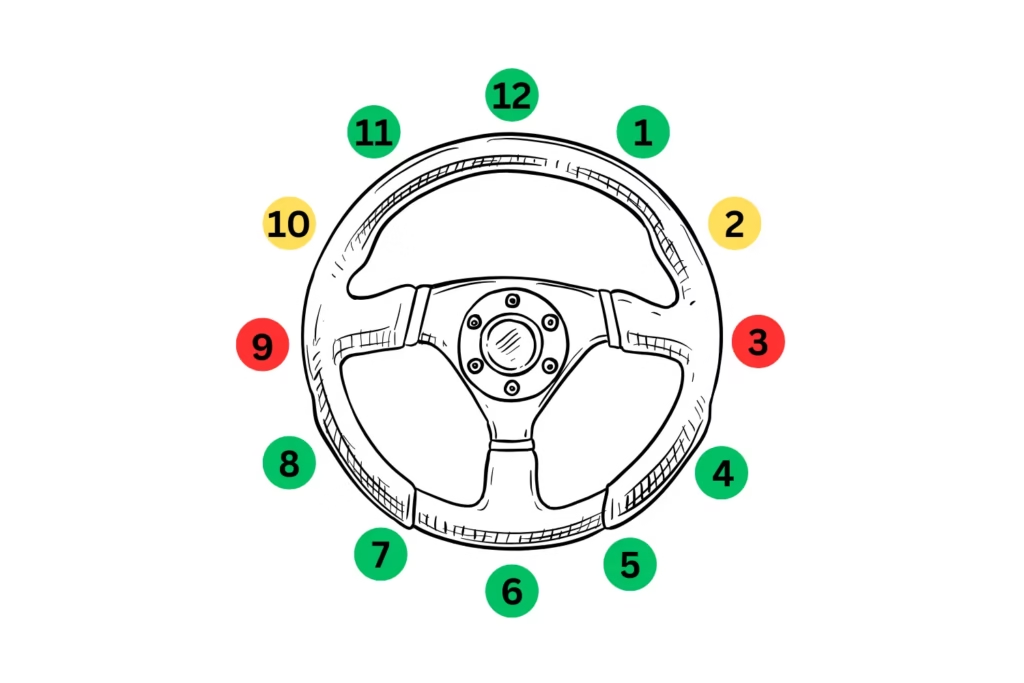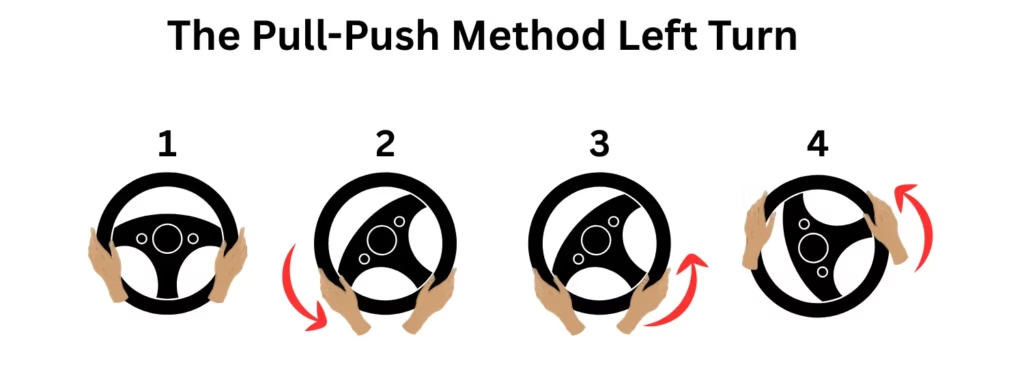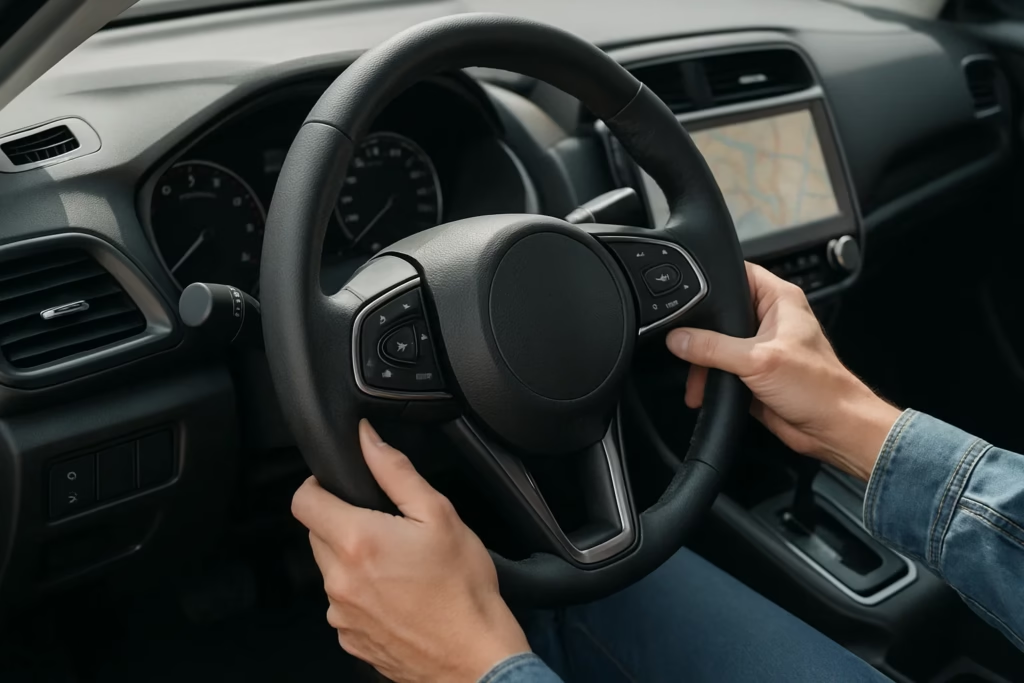Learning to drive is an exciting milestone, but one of the most important skills you must master early is steering control. Without proper steering, even the best acceleration or braking won’t keep you safe on the road. Whether you’re preparing for your first driving lesson or practicing with a family member, understanding steering control basics will give you the confidence to handle your car smoothly.
In this guide, we’ll break down everything you need to know about steering control. You’ll discover the proper hand positions, how to steer in different situations, common mistakes beginners make, and tips to improve your control step by step.
Why Steering Control Matters for Beginners
Steering is more than just turning the wheel. Good steering control means:
Keeping your car in a straight line without weaving.
Taking turns smoothly without jerky movements.
Maintaining the correct lane position.
Reacting quickly in emergencies.
Poor steering control is one of the most common mistakes new drivers make, and it can lead to unsafe situations. By practicing the basics early, you’ll set a strong foundation for all your driving lessons.
Steering Wheel Basics
Before we dive into techniques, let’s get to know the steering wheel itself.
Adjust the wheel: Most cars allow you to tilt or telescope the wheel. Adjust it so your arms are slightly bent (not stretched).
Check your grip: Your grip should be firm but relaxed. Avoid squeezing too tightly.
Understand the wheel’s movement: The steering wheel doesn’t turn endlessly—it has a lock-to-lock range (usually 2.5 to 3 turns).
👉 Tip: Sit in the driver’s seat with the engine off and practice turning the wheel lock to lock so you know its limits.
The Correct Hand Position
Traditionally, learners were taught the “10 and 2” position, but modern safety guidelines recommend “9 and 3” on the wheel. This keeps your hands level with your shoulders and allows better control if the airbag deploys.
Place your left hand at 9 o’clock.
Place your right hand at 3 o’clock.
Keep both thumbs resting lightly on the rim, not wrapped tightly inside.
This position gives you:
✅ Maximum leverage for turning.
✅ Balanced control in straight driving.
✅ Quicker response during sudden maneuvers.

Basic Steering Techniques for Beginners
1. The Pull-Push Method (Best for Beginners)
This is the safest and most commonly taught technique in driving schools.
To turn right: Pull the wheel down with your right hand while your left hand pushes it up.
To turn left: Do the opposite.
Your hands never cross over each other, keeping control steady.
2. The Hand-Over-Hand Method (For Sharper Turns)
Used when making tighter turns, such as U-turns or sharp corners.
Begin with 9 and 3.
One hand crosses over the other as you turn.
Bring your hands back quickly once the turn is complete.
Though effective, it’s riskier with airbags, which is why many instructors prefer teaching pull-push first.

Steering in Different Situations
Straight Roads
Keep a light, steady grip.
Look far ahead, not just at the road directly in front.
Make micro-adjustments instead of big jerks.
Turning Corners
Slow down before the corner.
Use pull-push or hand-over-hand depending on sharpness.
Accelerate gently out of the turn.
Roundabouts
Approach slowly, hands ready at 9 and 3.
Use pull-push for smooth navigation.
Exit with a controlled release of the wheel.
Parking Maneuvers
Parking requires quicker and larger wheel turns.
Practice full lock turns in an empty space.
Move slowly—your steering should always match your car’s speed.
Common Steering Mistakes Beginners Make
Over-steering: Turning too much, often leading to weaving.
Under-steering: Not turning enough, causing wide turns.
Looking at the wheel: Always keep your eyes on the road, not your hands.
One-hand driving: Cool in movies, dangerous in real life.
Death grip: Holding too tightly causes stiff, jerky movements.

Safety Notes on Steering Control
Always keep both hands on the wheel unless shifting gears.
Avoid eating, texting, or holding objects while driving.
Never steer with your palm alone—it reduces control.
Good steering is not just about passing your driving test—it’s about keeping yourself and others safe on the road.
Tips to Improve Steering Control
Practice in an empty lot before going on busy roads.
Look where you want to go—your hands naturally follow your eyes.
Match speed with steering—slow car = faster wheel turns, fast car = gentle adjustments.
Stay relaxed—tense shoulders make movements harder.
Do short practice drills: figure-eights, wide circles, and straight-line driving.
👉 Remember: Smoothness comes from practice, not force.
Mastering steering control basics is the first big step in becoming a confident driver. From hand positions to techniques like pull-push, and practicing in different road situations, these skills will help you drive smoothly and safely.
Remember: the more relaxed and consistent your practice, the better your control will be. Soon, steering will feel natural, and you can focus on the bigger picture—reading traffic, planning routes, and enjoying the freedom of driving.
Discover more from SMOOTHSTEERING
Subscribe to get the latest posts sent to your email.




Pingback: What Are Blind Spots and How to Check Them
Pingback: How to Change Gears Smoothly